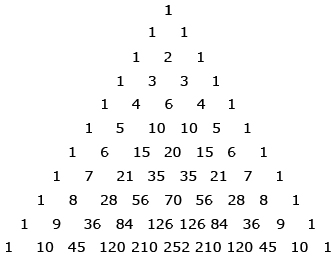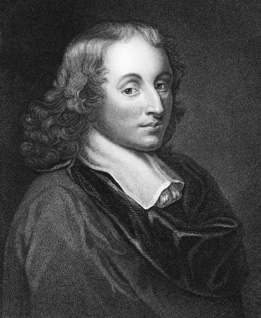Lesson 4
1. Lesson 4
Module 8: Permutations, Combinations, and the Binomial Theorem
Lesson 4: The Binomial Theorem
Focus
In previous lessons in this module you explored a number of ways in which people are identified. These forms of recognition included phone numbers, passwords, and passports. Remember that personal identification is any data that can be used to identify an individual. A famous mathematician is often identified by the triangle shown.


iStockphoto/Thinkstock
Blaise Pascal was a French mathematician who was credited with many mathematical innovations. He is perhaps most famous for what is known as Pascal’s triangle. This triangle contains many interesting number patterns. The triangle can be created by calculating the value of certain combinations.
There are other uses for Pascal’s triangle. In this lesson you will learn to expand a binomial expression to any power.
Lesson Outcomes
At the end of this lesson you will be able to
- expand powers of a binomial in a variety of ways
- identify and explain patterns in Pascal’s triangle
Lesson Questions
You will investigate the following questions:
- How do the coefficients of the terms in the expansion of (x + y)n relate to the terms of Pascal’s triangle?
- How can you expand a binomial of the form (x + y)n without multiplying all the factors?
Assessment
Your assessment may be based on a combination of the following tasks:
- completion of the Lesson 4 Assignment (Download the Lesson 4 Assignment and save it in your course folder now.)
- course folder submissions from Try This and Share activities
- additions to Glossary Terms and Formula Sheet
- work under Project Connection